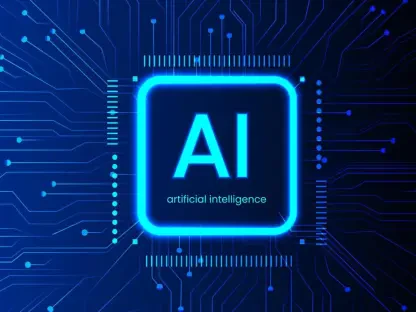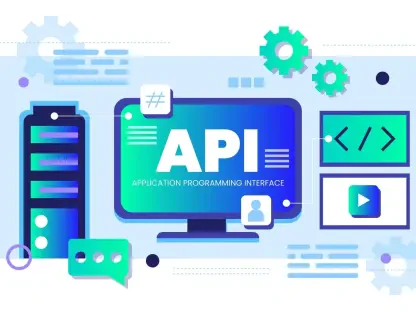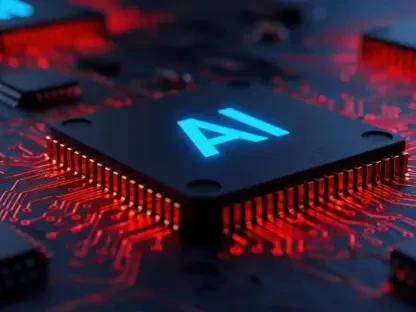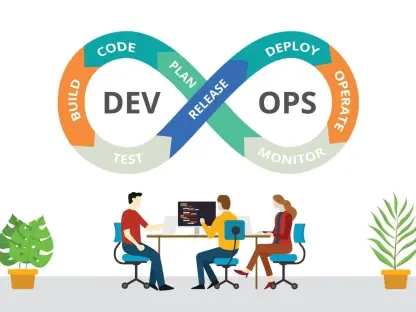As we dive into the rapidly evolving world of AI hardware and cloud computing, I’m thrilled to sit down with Anand Naidu, our resident development expert. With his deep knowledge of both frontend and backend technologies, as well as proficiency in various coding languages, Anand brings a unique perspective on the latest advancements in AI processors. Today, we’re focusing on Google’s newly announced Ironwood TPU and its potential to reshape the landscape for businesses tackling AI workloads. Our conversation explores the technology behind Ironwood, its integration with cloud services, and the broader implications for the AI industry amidst GPU shortages and supply challenges.
Can you walk us through what Google’s Ironwood TPU is and how it integrates into their cloud computing ecosystem?
Absolutely, Sebastian. Ironwood is the seventh generation of Google’s Tensor Processing Unit, or TPU, which is a specialized hardware accelerator designed specifically for AI and machine learning tasks. Unlike general-purpose processors, TPUs are optimized for high-performance computations, particularly for neural network training and inference. Ironwood represents a significant upgrade in terms of speed and energy efficiency compared to its predecessors. Within Google’s cloud computing ecosystem, it’s being rolled out as a key component of their AI infrastructure, allowing businesses to access this cutting-edge technology through their cloud services in the coming weeks. This means companies can leverage Ironwood for their AI workloads without needing to invest in physical hardware themselves.
How do you see Ironwood impacting businesses that are currently struggling with GPU shortages for AI projects?
Ironwood could be a real lifeline for many businesses right now. The global shortage of high-end GPUs has driven up costs and delayed AI deployment timelines for countless companies. Ironwood offers a compelling alternative with price-performance metrics that analysts suggest are on par with leading GPUs from other providers. Additionally, its energy efficiency addresses another pain point—electricity costs and availability for powering these intensive workloads. For companies that can’t secure GPUs or are looking to cut operational expenses, Ironwood provides an opportunity to keep their AI initiatives moving forward without breaking the bank.
What makes Ironwood’s design particularly suited for Google’s TensorFlow framework, and why does that matter?
Ironwood was developed hand-in-hand with TensorFlow, Google’s open-source machine learning framework, which gives it a distinct edge for workloads built on that platform. This tight integration means that Ironwood can execute TensorFlow-based AI models with exceptional efficiency, outperforming general-purpose GPUs that support multiple frameworks but lack the same level of specialization. For businesses already using TensorFlow, or those starting from scratch, this translates to faster processing times and lower resource consumption. It’s a big deal because many AI models in research and enterprise settings are built on TensorFlow, so Ironwood can directly boost their performance.
Who do you think stands to gain the most from the introduction of Ironwood in the AI industry?
I believe the primary beneficiaries will be newer AI companies, especially those working on large language models, like startups or innovators with evolving codebases. These organizations are often more flexible in adopting new hardware since they’re not deeply entrenched in legacy systems. They can take full advantage of Ironwood’s capabilities for training and inference tasks. Smaller vendors can also benefit by accessing high-performance computing through Google’s cloud without the massive upfront costs of building their own infrastructure. It levels the playing field a bit, giving them a chance to compete with bigger players by using state-of-the-art tech.
Google has been significantly increasing its investment in TPUs. Can you give us a sense of the scale of this demand?
The demand for TPUs is growing at a remarkable pace. Google is reportedly set to purchase nearly $10 billion worth of TPUs this year alone, a sharp rise from about $6 billion last year and just over $2 billion the year before that. This surge reflects not only Google’s internal needs for running their own services but also the rising interest from external businesses. In the broader AI chip market, Google holds about 5% of the share, making them the second-largest player in cloud and enterprise data centers, though they’re still far behind the dominant leader, which commands around 78% of the market. It’s clear that TPUs are becoming a critical piece of the AI puzzle.
What challenges might Google encounter as they roll out Ironwood to meet this growing demand?
One of the biggest hurdles could be manufacturing constraints. There are already reports of bottlenecks at key chip fabrication partners, particularly around advanced packaging capacity. This could slow down the production of Ironwood chips and delay availability for businesses eager to adopt them. Supply chain issues like these aren’t unique to Google, but they can have a ripple effect, impacting deployment schedules and potentially frustrating customers who are counting on Ironwood to solve their GPU shortage problems. Google will need to navigate these constraints carefully to maintain momentum.
For enterprises considering a switch to TPUs like Ironwood, what are some of the barriers they might face?
A major barrier for many enterprises is their existing codebase. A lot of companies have invested heavily in software platforms tied to other GPU architectures, with code written for frameworks that have been around longer than TensorFlow. Switching to Ironwood often means reworking or rewriting significant portions of that code, which can be both costly and time-consuming. For businesses locked into these legacy systems, the transition costs might outweigh the benefits of Ironwood’s performance gains, at least in the short term. It’s a classic inertia problem in tech adoption.
Looking ahead, what is your forecast for the role of TPUs like Ironwood in shaping the future of AI hardware?
I’m optimistic about the trajectory of TPUs like Ironwood. As AI workloads continue to grow in complexity and scale, the demand for specialized hardware that offers both performance and efficiency will only increase. TPUs are well-positioned to carve out a larger share of the market, especially as GPU shortages persist and energy costs remain a concern. I think we’ll see more businesses, especially those in the AI and machine learning space, exploring hybrid approaches—using TPUs alongside GPUs to optimize their workflows. Over the next few years, I expect Google to push the boundaries further with even more advanced TPU iterations, potentially redefining how we think about AI infrastructure in the cloud.









